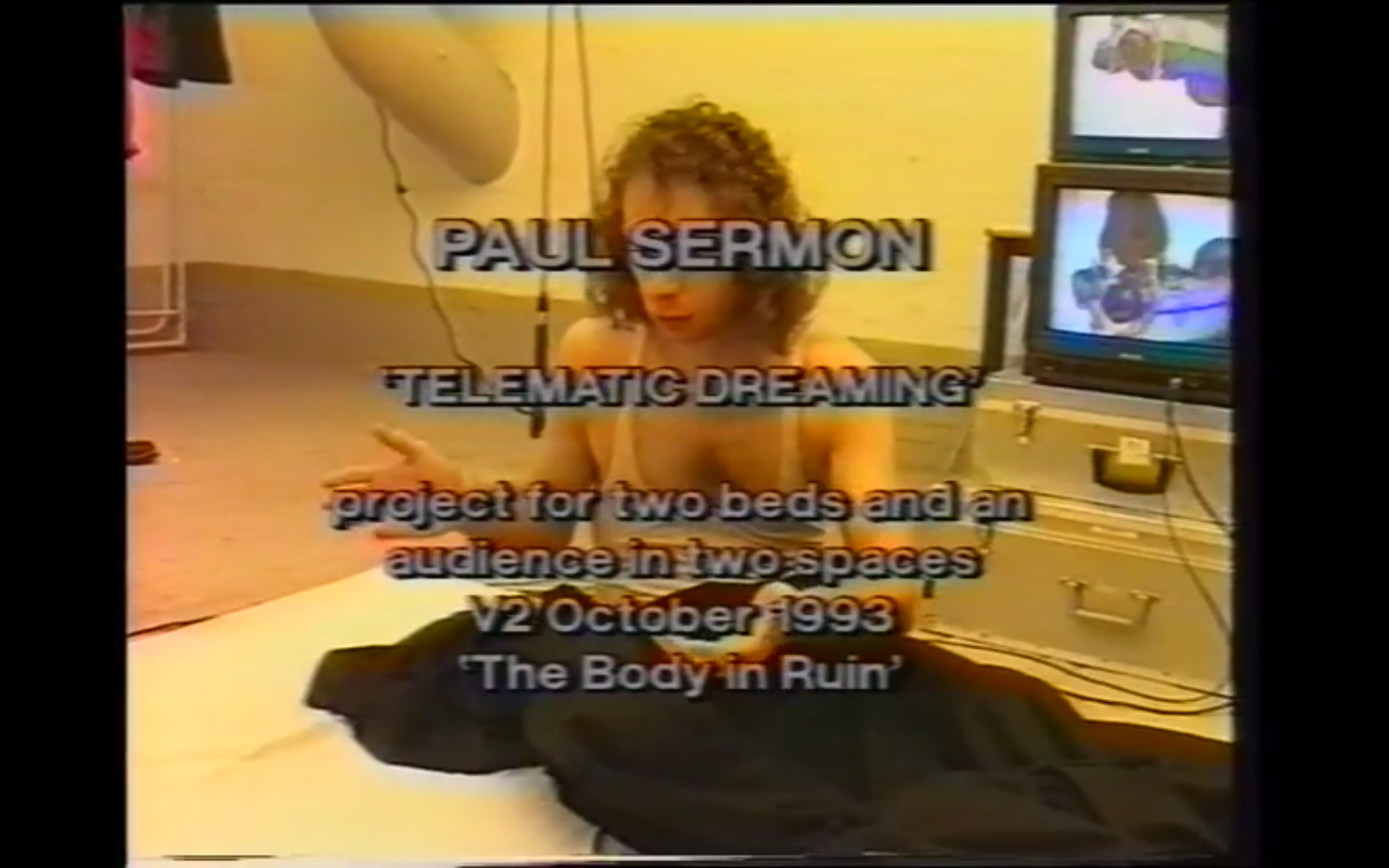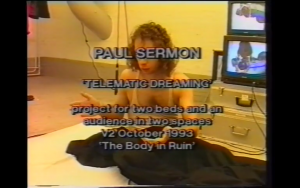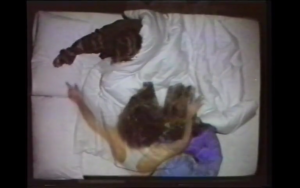“…our sense of reality is fragmented and juxtaposed: a remix of relationships, images, and memories.” – Packer, R., “The Third Space”
“Telematic Dreaming” by Paul Sermon succinctly presents this notion of the third space. The work consists of 2 beds in different locations, one which is blue-screened and another for the participant to experience the work. The artist lies on the blue-screened bed, where his image is captured live and video projected onto the second bed. It is with this image which the participant interacts with. Sermon invites his audience to lie on the bed and interact with him. Pre-recorded imagery is also projected onto the participant’s bed, creating different textures and shapes. At the same time, another camera captures video of the participants bed and plays it on a screen, reinforcing the idea of people interacting in a different space; the third space.
This video documents the work:
[vimeo 44862244 w=500 h=375]
Telematic Dreaming by Paul Sermon (1993) from V2_ on Vimeo.
This video illustrates the work where the artist is not present; viewers are invited to take his place on the blue-screened bed.
[youtube http://www.youtube.com/watch?v=f2HhY_8FO2c]
This work really foresaw the use of technology for long-distance communication, especially for maintaining relationships. The bed, an intimate piece of furniture, becomes a physical incarnation of the shared space between the people. Furthermore, in allowing the participant to see himself/herself on a screen with the image of the artist, Sermon effectively toyed with their sense of reality.
I found that it was particularly interesting to watch how people would respond to the moving image of the artist. Nowadays, we are used to seeing videos that try to alter our sense of reality – for example 3D movies – but I assume it was rather novel in 1993. When the artist moves his hand toward the participant, there’s always some sort of reaction, even though the participant knows that it’s just an image. I think this demonstrates the visual nature of us humans, in how it can overrule our logical thinking.
Overall, I think that this work still maintains its value after 2 decades – I feel that although the presentation of the work may have remained almost the same, its meaning has evolved over time. Not because of the work, but because of the people. As Randall Packer wrote, “But most startling is the fact that the third space is simply an integral fact of everyday life in the 21st century. (Packer, R)” Instead of introducing people to an intimate third space, “Telematic Dreaming” now also has the power to remind people of the distinction between the spaces we inhabit.


